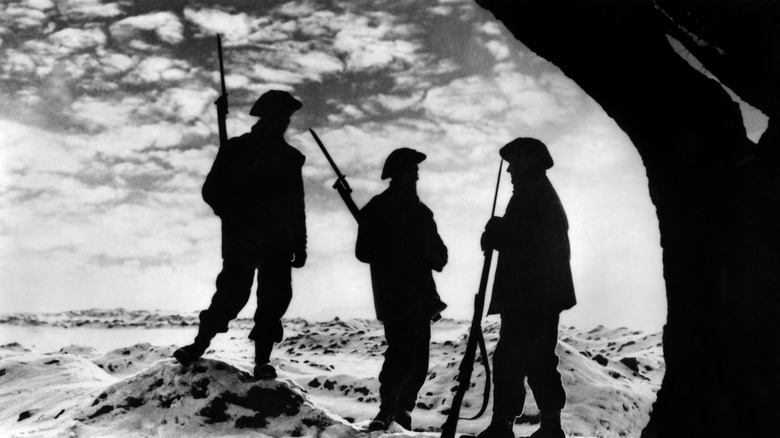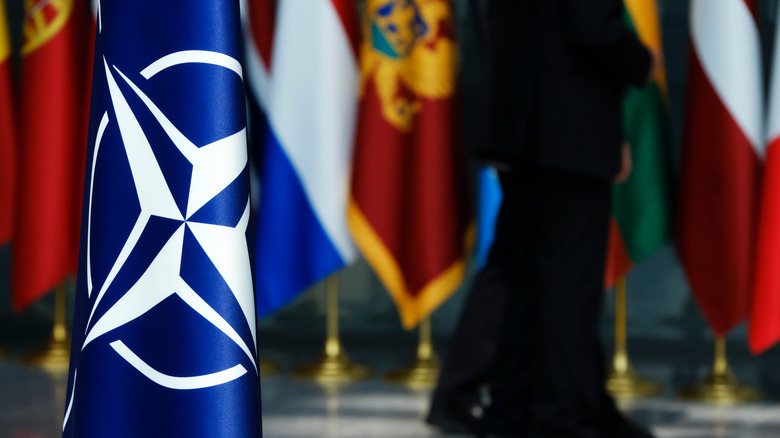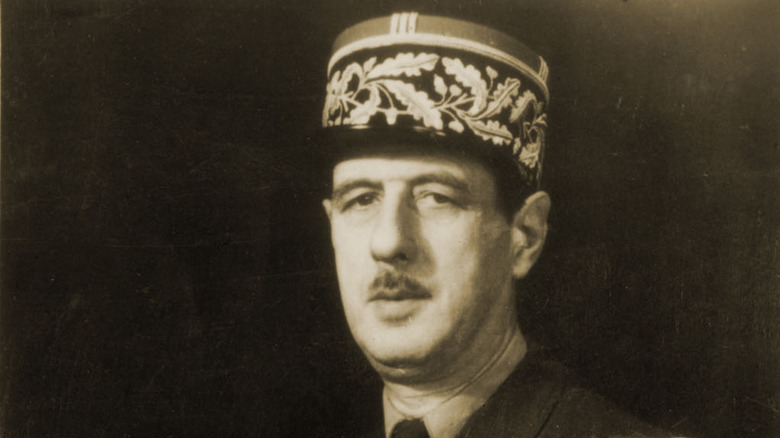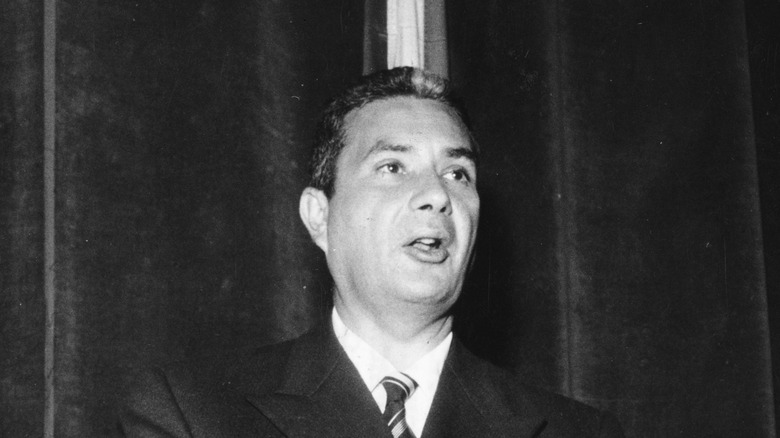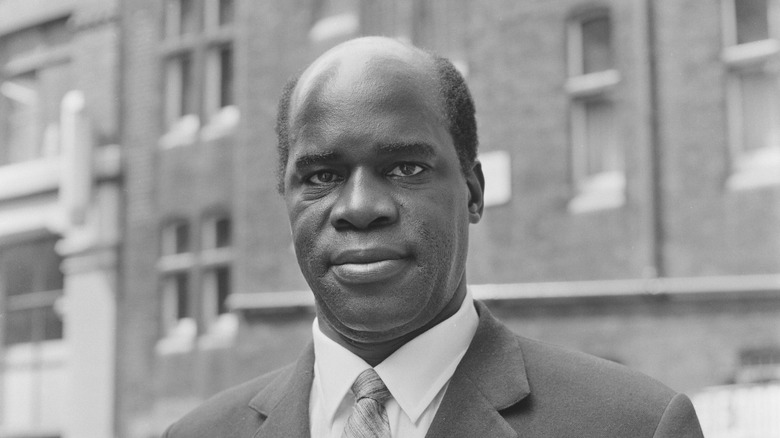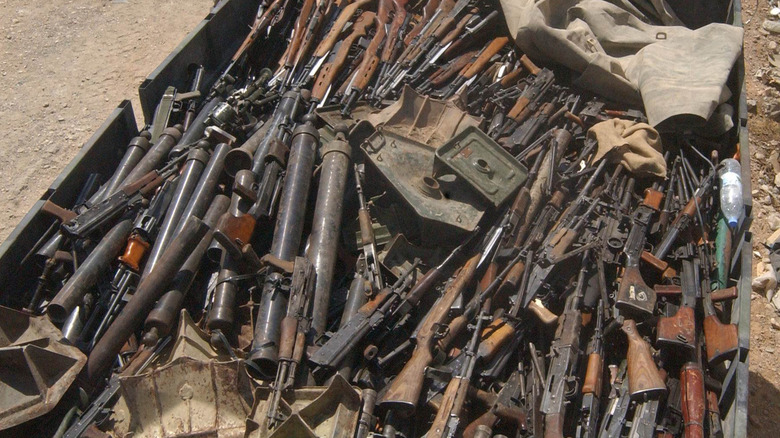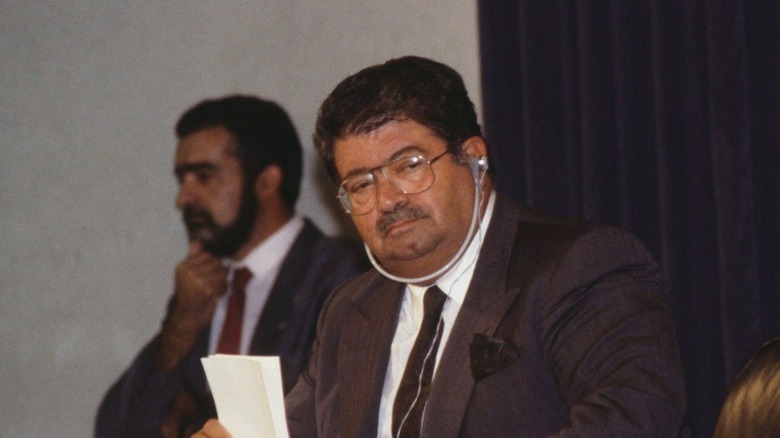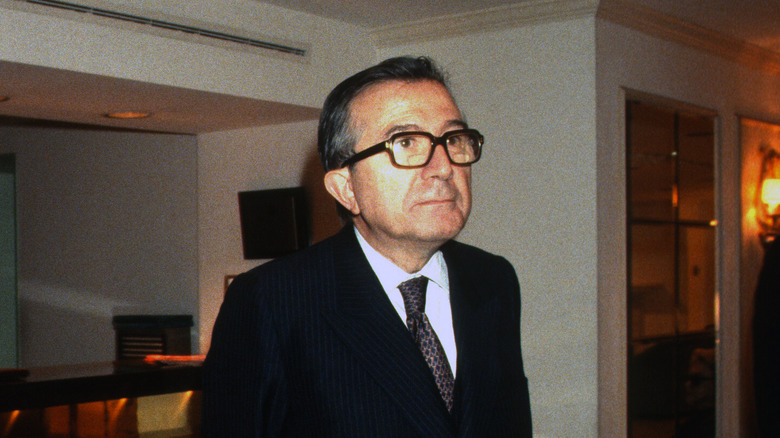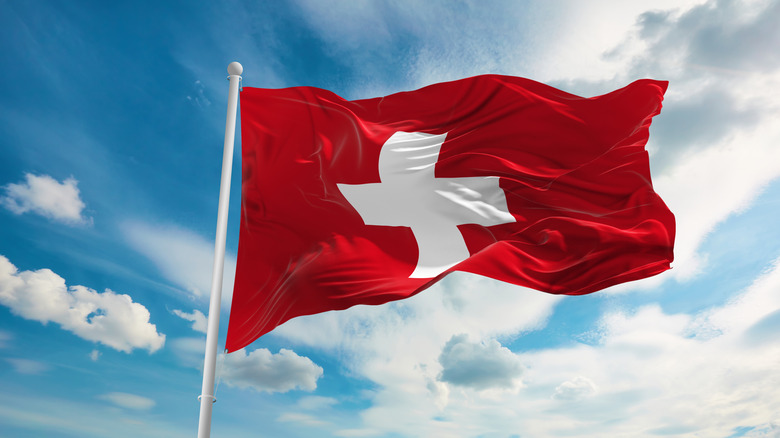Operation Gladio: The CIA's Secret Army In Europe
During the Cold War, the self-determination of countless countries was greatly influenced by the meddling of the CIA, NATO, and MI6. Fearful of any hint of communism in any country, a network of secret guerrilla armies were scattered across Europe with the goal of suppressing communism. In many cases, violence was also committed by far-right extremists in order to target communists.
This network of stay-behind armies became known as Operation Gladio. And because only a handful of countries have revealed information to the public about the stay-behind networks, there's only a few incidents in which the affiliation of Operation Gladio is confirmed and known for certain. Other incidents, like the Brabant Massacres in Belgium, the Montejurra massacre in Spain, and the assassinations of Giovanni Falcone and Paolo Borsellino, are also alleged to have been associated with Operation Gladio, but there's less evidence with which to say for sure. Their activities also weren't limited to Europe. There are even said to be ties between Operation Gladio and the assassination of Patrice Lumumba.
As time goes on, more and more information will likely come out about the activities of Operation Gladio. But as of 2021, many of its secrets are still being held close. And this piece barely scratches the surface of everything Operation Gladio has been accused of associating with. This is Operation Gladio: The CIA's secret army in Europe.
Growing out of British Auxiliary Units
Operation Gladio grew out of the British Auxiliary Units formed during World War II. Fearing a German invasion, British Military Intelligence decided to train groups of people across Britain, known as Auxiliary Units, as a resistance movement. But according to The Guardian, these men weren't regular soldiers. They weren't paid and bore no official uniform. Instead, they were "highly trained civilians ordered by their government to harass an occupying force from behind the lines, even after an official surrender."
In "Fighting Nazi Occupation," Malcolm Atkin writes that although the Auxilary Units couldn't be given commands once they were set out into the world, they were given a letter that listed local people who were to be assassinated in the event of an invasion. This list included former members who might be a security threat or people who were "suspected local collaborators."
This was the first time that something like this had ever been attempted. Although resistance movements have historically "grown organically under occupation," this was the first time that a government tried to set up a "pre-organized guerrilla network." Ultimately, the Germans never ended up invading Great Britain, and the likelihood of this actually succeeding has been contested, so it's unclear how effective the Auxiliary Units would've actually been in the event of a German invasion.
NATO and the CIA
Three years after the end of World War II, the 1948 Brussels Treaty created the Clandestine Committee of the Western Union. And after the North Atlantic Treaty Organization (NATO) was created in 1949, the Western Union was left "devoid of its newly-expanded authority," according to the University of Luxembourg.
But the Clandestine Committee was transformed into the Clandestine Planning Committee (CPC) in 1952 and, along with the Supreme Headquarters Allied Powers Europe (SHAPE), was linked to NATO. According to "The Cold War," it was through this network that NATO member states organized the stay-behind network across Western Europe that would become known as Operation Gladio.
The CIA, with the help of MI6, was also instrumental towards setting up the stay-behind espionage networks. According to "The Declassified History of American Intelligence Operations in Europe" by Matthew M. Aid, the CIA intended to do "whatever it took" to prevent Western European countries from having any communist influence in their governments. And by the late 1960s, the CIA was "covertly financing dozens of underground stay-behind agent networks in thirteen Western European countries, including supposedly neutral Sweden."
Don't forget about the Vatican
Throughout Operation Gladio, the CIA relied heavily on the Vatican. According to "The Declassified History of American Intelligence Operations in Europe," the CIA used sources in the Vatican to gather information not only about Italy, but about countries behind the Iron Curtain as well, such as Poland or Ukraine. Under James Jesus Angleton, the CIA created a "Vatican desk," which reviewed reports sent to the Holy See from papal diplomats behind the Iron Curtain. Cardinal Domenico Tardini, one of the top aides to Pope Pius XXII and the head of the Foreign Section of the Vatican's Secretariat of State was "one of the CIA's top sources."
In "Operation Gladio," Paul L. Williams also details the extent to which the CIA funneled money through the Istituto per le Opere di Religione (IOR), also known as the Vatican Bank. The Vatican Bank keeps no records or paper trail of any kind. And as a result, "millions can be deposited into the IOR on a continuous basis and channeled into numbered Swiss bank accounts without the possibility of detection," which is exactly what the CIA did. The Truman Administration funneled over $350 million into the Vatican Bank, and in 1948, the CIA "dumped $65 million of its black money into the Vatican Bank."
It's impossible to know exactly how much money the CIA channeled through the Vatican Bank, but the Christian Democratic Party alone received "more than $20 million in annual aid from the CIA."
What were stay-behind organizations?
By the late 1960s, stay-behind networks were established in numerous European countries, each with their own codename. The name "Operation GLADIO" comes from the Italian name for the campaign. Meanwhile, in Greece it was called "THUNDERBIRD" or "RED SHEEPSKIN," in Belgium it was "NICLIPPER," and in Turkey it was called "EXWOOD," according to The Declassified History of American Intelligence Operations in Europe.
These stay-behind organizations were made up of almost 5,000 people across Western Europe. And this is in addition to the more than 60,000 American military and civilian intelligence personnel and support staff that were simultaneously stationed in Western Europe at the time. According to "The Cold War," those recruited as stay-behind agents were given tasks for both wartime and peacetime, though it's unclear whether the Cold War counted as wartime or peacetime. In any event, the violence with which the stay-behind organizations suppressed any political dissent was staggering.
In an attempt to fight any political influence from the left, in most countries, like Italy, "ex-fascists and right-wing extremists" were recruited, funded, and armed. And Daniele Ganser writes in "NATO's Secret Armies" that in Turkey, "many former Grey Wolves and other right-wing extremists [were] recruited directly from prisons into the stay-behind death squads."
A coup for a colony
On May 13, 1958, during the Algerian War for Independence, a demonstration in Algeria is said to have turned into a "quasi-insurrectional riot," which resulted in the military taking over. This takeover extended over to mainland France, and by the end of the month, Charles de Gaulle returned to power, leading the Fourth Republic of France to collapse into the Fifth Republic.
In "NATO's Secret Armies," Ganser writes that the coup initially involved an element known as Operation Resurrection, which would entail parachutists dropping down around Paris to take control over "vital centres of Paris" and arrest a number of politicians, "as well as the entire direction of the French Communists." But just hours before Operation Resurrection was about to commence, de Gaulle announced that he'd successfully taken over the government.
Despite this blatant usurpation of power, the United States expressed few concerns. According to Verso, instead, the United States "actively supported the 'de Gaulle solution', seeing it as the only way to avoid a Popular Front and a government with the Communists." The stay-behind army in France, known first as "Plan Bleu" and later as "Rose des Vents," already had explicit instruments to "secretly prevent the powerful PCF [French Communist Party] from coming to power." And believing that the politicians of the Fourth Republic were "weak" and unwilling to maintain Algeria's status as a colony, the stay-behind army was incorporated into the plans for the coup d'état.
A coup on standby
When Aldo Moro, prime minister of Italy in 1964, decided to include the Italian Communist Party in his governmental coalition, Operation Gladio seemingly shifted into action and started planning a coup. According to "NATO's Secret Armies," the coup was planned by chief of the Carabinieri, the Italian paramilitary police, General Giovanni De Lorenzo, along with CIA secret warfare expert Vernon Walters, chief of the Rome CIA station Williams Harvey, and Renzo Rocco, director of the Gladio units. Associated Press reports that the coup, known as "Piano Solo," entailed deploying 20,000 Carabinieri policemen across Italy, who would occupy television and radio stations as well as Communist Party buildings. "731 leading leftist politicians were [also] to have been rounded up and detained at a military base on the island of Sardinia."
Ultimately, a fully-fledged coup was never enacted, but the Gladio stay-behind army didn't wait idly by. Before the planned coup, Rocco reportedly used the Gladio stay-behind army to set off bombs in numerous offices and "thereafter blamed the terror on the left."
It's unclear exactly how involved the United States actually was, and, according to "Renewing Italian Socialism," former CIA agent Robert Komer and historian Arthur Schlesinger both deny American involvement in the planned coup. Meanwhile, Piano Solo has been described as "a carbon copy of Gladio," and even if the U.S wasn't involved, the operation "corresponded to the interests followed by sectors of the administration of the United States."
Aginter Press assassinates Eduardo Mondlane
In Portugal in 1966, the CIA set up the stay-behind army known as Aginter Press under the direction of Captain Yves Guerin Serac. According to the Swiss Federal Institute of Technology Zurich, the army was trained in "bomb terrorism, silent assassination, subversion techniques, clandestine communication and infiltration and colonial warfare." And this training was likely incorporated in the assassination of Eduardo Chivambo Mondlane three years later.
Mondlane was the President of the Mozambican liberation party, leader of the Frente de Libertação de Moçambique (FRELIMO), and at the forefront of the anti-colonial movement in Mozambique, according to Genève-Afrique. But in 1969, he was assassinated in Dar-es-Salam when he opened an explosive package.
DW reports that some have accused rival FRELIMO members or Portuguese International and State Defense Police (PIDE). Meanwhile, according to "Revolutionary State-Making in Dar Es Salaam," several people have claimed that the bomb was assembled by Casimiro Monterio, "a Goa-born explosive expert and Aginter operative." But ultimately, as of 2021, Mondlane's murder remains unsolved.
Fascists spreading fear
On May 31, 1972, members of Ordine Nuovo, an Italian far-right neo-fascist organization, booby-trapped a Fiat car. After the Carabinieri were lured there with an anonymous phone call, a bomb went off in the car as they opened the hood, killing three of them and injuring a fourth. Known as the Peteano massacre, according to "Threats to Democracy," for decades, the investigations followed "false statements of a militant turned police informer" and "the phony declarations of a carabinieri informer," trying to push the blame onto extreme-left groups or petty criminals. But in 1984, Judge Felice Casson realized that the Peteano affair warranted further investigation.
All That's Interesting writes that Casson realized that police hadn't even bothered to investigate the bombing site. And crucially, the explosive used for the bomb was C4, which at the time was "available only to Operation Gladio groups and NATO." Once the investigation revealed that neo-fascist Vincenzo Vinciguerra was responsible for the bombing, Vinciguerra was more than happy to confess, "boasting with pride of his stand as a 'political soldier.'"
Vinciguerra admitted that Ordine Nuovo was closely tied with Gladio and that they were responsible for spreading violence and terror. "The reason was quite simple. They were supposed to force these people, the Italian public, to turn to the State to ask for greater security." And the Peteano massacre wasn't the only bombing Ordine Nuovo committed. In 1969, they bombed the headquarters of the National Agricultural Bank, killing 17 people.
Weapons spread across Europe
Although there wasn't a great deal of oversight into the activities of the stay-behind armies, Operation Gladio made sure that if anything, they were well-armed. Associated Press reports that stockpiles of arms and explosives were hidden across Western Europe between 1950 and 1990 for the thousands of stay-behind operatives. In Germany, "pistols, grenade launchers, explosives and radios were stored in secret caches." And in Greece, weapons and ammunition were found buried between 1985 and 1988, "when the network was dismantled."
But even when the stay-behind armies were dismantled, not all the secret arms deposits were found, like the 12 in Italy that reportedly disappeared, reports The New York Times. And according to a declassified U.S. Department of State document, when a weapons cache was discovered in the Netherlands in the 1980s, it was reported to likely be connected to Gladio, and former Dutch defense minister Hendrikus Vredeling claimed that he was "aware of the arms caches and of the assignment of those for whom these weapons were intended," although he never revealed the assignment or the intended recipients of the weapons.
According to "NATO's Secret Armies," the caches discovered in Italy alone contained "portable arms, ammunition, explosives, hand grenades, knives and daggers, 60mm mortars, several 57mm recoilless rifles, sniper rifles, radio transmitters, binoculars, and various tools."
The assassination of Turgut Özal
Halil Turgut Özal, the eighth president of Turkey, served in office from 1989 until his death in 1993. As president, Özal often faced criticism from conservatives in Turkey. When he repealed the Language Bill, which required the use of Turkish "in education, politics and the broadcast media," Süleyman Demirel stated that "this is the greatest harm you can inflict on Turkey," per Alternatives.
According to Ziv Magazine, Özal also hoped to address Turkey's denial of the Armenian genocide. In 1991, after meeting with representatives of the Armenian community, Özal stated, "What if we officially recognize the 1915 Armenian genocide and face up to our past? Let's take the initiative and find the truth. Let's pay the political and economic price, if necessary." He reportedly wanted to start a project to return land in Van to Armenians.
Özal also sought open dialogues with the Kurdistan Workers Party (PKK), according to Al-Monitor, and on March 23, 1993, peace agreements began between the PKK and the Turkish government. Unfortunately, Özal was found dead on April 17, effectively ending the peace talks. Although it was later determined that there were multiple poisons in Ozal's system at the time of his death, it's unclear if the poisoning caused his death. Some, like journalist Huseyin Gulerce, claim that a "Gladio-type formation" was responsible for Özal's assassination, because they were "irked with Ozal's attempts to end [the military's] strong influence on Turkey's political life and state bureaucracy."
Italian revelations of Operation Gladio
In 1990, Italian prime minister Giulio Andreotti revealed the existence of Operation Gladio in Italy. The New York Times reports that Andreotti described the stay-behind army as "originally an Italian creation" that evolved into a branch of the wider Operation Gladio network across Western Europe. Andreotti also said that the Italian branch of Operation Gladio "operated within NATO and abetted by a 1956 agreement between the United States and Italian secret services."
Andreotti initially claimed that the that the stay-behind army was dismantled in 1972, likely because in 1974, he'd gone on record saying that "the head of the secret services has repeatedly and unequivocally excluded the existence of a hidden organization of any type or size," per "NATO's Secret Armies." But in his final report, Andreotti admitted to the longevity of Operation Gladio and revealed the locations of the Gladio army's secret arms caches.
There was an uproar in Italy, and the CIA definitely wasn't pleased with the revelation, but Andreotti wasn't finished. He also declared that "Each chief of government has been informed of the existence of Gladio." Former prime minister Bettino Craxi tried to deny ever having been informed during his reign as prime minister, but there were signed documents proving his involvement.
Swiss revelations of Projekt-26
Italy wasn't the only country to reveal the existence of a CIA-funded stay-behind army. Around the time of Giulio Andreotti's revelation, news reports from Britain, Norway, Portugal, Spain, Austria, Turkey, Denmark, Sweden, and Switzerland described similar organizations of guerrilla fighters made to fight against communism, according to The New York Times.
In 1990, news about Switzerland's stay-behind army also started to come out. According to The British Secret Service in Neutral Switzerland, after stories of the secret guerilla army were published, Colonel Herbert Alboth, who commanded the Swiss stay-behind Special Service, claimed in a confidential letter that "as an insider" he could reveal everything. This letter was dated March 1, 1990, but unfortunately, Alboth never had the chance to testify. On April 18, he was found dead in his apartment after having been stabbed several times "with his own military bayonet."
A parliamentary committee in Switzerland investigated the military department in 1990 to reveal that Projekt-26, or P26, did in fact exist in the form of secret underground armies. However, per ETH Life, the parliamentary committee asserted that "P26 was not directly involved in the network of NATO's secret armies but it had close contact to MI6."

